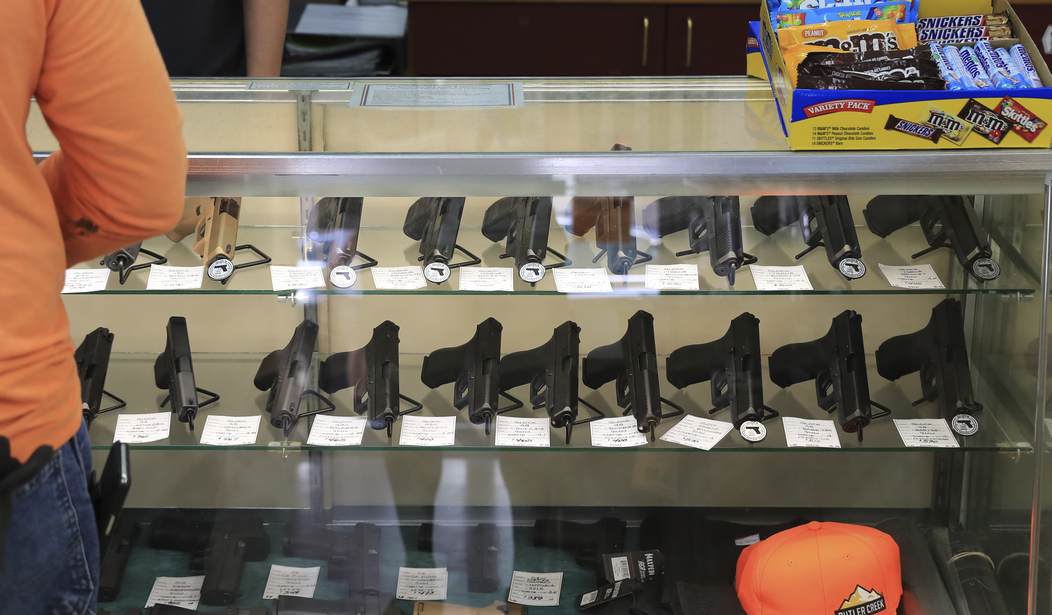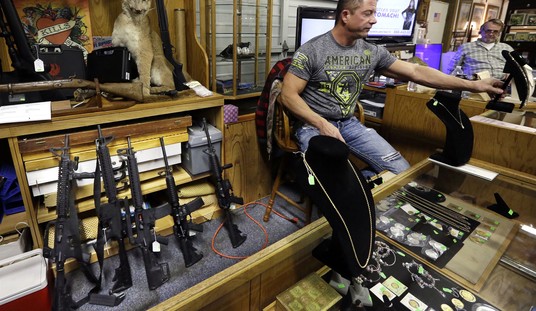Given the makeup of the Fourth Circuit, which slants heavily towards Democratic-appointed judges, this was almost inevitable. Still, it doesn’t make this any less frustrating to see.
LEGAL ALERT: The Fourth Circuit has granted the en banc petition in the lawsuit challenging Maryland's handgun license law. The 3-judge panel struck down the law in November, but today's order means that the entire court will rehear the case. pic.twitter.com/uzFH761nx0
— Firearms Policy Coalition (@gunpolicy) January 11, 2024
In a 2-1 decision last November that three-judge panel concluded that Maryland’s Handgun Qualification License, which is in essence a permit-to-purchase law that requires additional background checks and training mandates before a resident can lawfully purchase a handgun and keep it in their home for self-defense, violated the Second Amendment. Writing for the majority, Judge Julius Richardson declared that the plaintiffs’ challenge to the law “must succeed” because the state failed to produce a single historical analogue to justify the law, much less evidence of a longstanding national tradition that comports with the restrictive practice.
The fact that a majority of judges on the Fourth Circuit agreed to re-hear the case indicates that they disagree with the panel’s opinion. Given that Maryland produced no evidence of that longstanding national tradition of requiring would-be gun owners to obtain a permit before they can purchase a handgun, I wonder if the gun control fans on the Fourth Circuit will instead try to undo Richardson’s decision by attacking the plaintiffs’ ability to challenge the law in the first place. Here’s how Richardson addressed the issue:
Our question at Bruen’s first step is simply whether Plaintiffs have made a prima facie case that the challenged law violates the Second Amendment. So they just need to show that the law regulates a course of conduct that falls within the Amendment’s plain text, i.e., their ability “to possess and carry weapons in case of confrontation.” Heller, 554 U.S. at 592. Nothing in the Amendment’s text or Bruen says that it protects only against laws that permanently deprive people of the ability to keep and bear arms. Cf. Bruen, 142. S. Ct. at 2134 (“Nothing in the Second Amendment’s text draws a home/public distinction with respect to the right to keep and bear arms.”). Yet, under the challenged scheme, an applicant without a firearm cannot possess or carry one until they are approved—a process that can take thirty days. And the law’s waiting period could well be the critical time in which the applicant expects to face danger. So the temporary deprivation that Plaintiffs allege is a facially plausible Second Amendment violation.
Accordingly, Maryland’s law regulates conduct that falls within the Second Amendment’s plain text. Plaintiffs’ challenge thus satisfies the first step of Bruen’s test, and we must proceed to the second step: Has Maryland shown that its law is justified by history and tradition?
Senior Judge Barbara M. Keenan spent much of her dissent discussing her problems with the majority’s conclusions. In her view, Richardson and Judge G. Steven Agee got it wrong when they determined that the potential 30-day waiting period infringes on the rights of gun owners.
In its truncated step-one inquiry, the majority fails to define the term “infringe” or otherwise to address its scope. Instead, the majority merely asks whether the law “regulates” an individual’s course of conduct. Maj. Op., at 11. Unsurprisingly, the answer to this question will almost always be “yes.” But the majority has not identified any basis for employing the term “regulates,” which notably does not appear in the Supreme Court’s Bruen framework, in place of the Second Amendment’s term “infringe.” Nevertheless, the majority invokes this substitute terminology, summarily concluding that the government must justify the “temporary deprivation” occasioned by the HQL requirement under step two of the Bruen inquiry because the law prevents the plaintiff “from owning handguns now.” Maj. Op. at 10 (emphasis in original) & 12.
Put differently, under the majority’s step-one view, the plaintiffs allege a “facially plausible Second Amendment violation” simply because compliance with the law’s requirements renders it “impossible” for the plaintiffs to own a handgun “right away.” Maj. Op., at 10. Accordingly, the majority has created a constitutional test that would render presumptively unconstitutional most, if not all, shall-issue permitting laws.
To me, this seems like the argument that judges on the en banc panel who are looking to uphold Maryland’s Handgun Qualification License are most likely to adopt, but it does have its weaknesses. For starters, Richardson is correct that the Supreme Court has repeatedly said that “when the Second Amendment’s plain text covers an individual’s conduct, the Constitution presumptively protects that conduct, and to justify a firearm regulation the government must demonstrate that the regulation is consistent with the Nation’s historical tradition of firearm regulation.”
The plain text of the Second Amendment clearly covers keeping a handgun in the home for self-defense, and if we have the right to possess a gun we must also have the corresponding right to acquire one. The question then becomes whether Maryland’s Handgun Qualification License (including its built-in waiting period) is consistent with the text, history, and tradition of the right to keep and bear arms. Quoting Bruen:
The test that the Court set forth in Heller and applies today requires courts to assess whether modern firearms regulations are consistent with the Second Amendment’s text and historical understanding. Of course, the regulatory challenges posed by firearms today are not always the same as those that preoccupied the Founders in 1791 or the Reconstruction generation in 1868. But the Constitution can, and must, apply to circumstances beyond those the Founders specifically anticipated, even though its meaning is fixed according to the understandings of those who ratified it. Indeed, the Court recognized in Heller at least one way in which the Second Amendment’s historically fixed meaning applies to new circumstances: Its reference to “arms” does not apply “only [to] those arms in existence in the 18th century.”
Heller and McDonald point toward at least two relevant metrics: first, whether modern and historical regulations impose a comparable burden on the right of armed self-defense, and second, whether that regulatory burden is comparably justified. Because “individual self-defense is ‘the central component’ of the Second Amendment right,” these two metrics are “ ‘central’ ” considerations when engaging in an analogical inquiry.
The Supreme Court says that the first question judges should ask isn’t “does this law infringe on an individual’s Second Amendment rights”, but rather “does the law cover conduct protected by the Second Amendment?” If the answer is “yes,” that’s when the judge starts their examination of the evidence presented by the government to justify the modern regulation to determine whether or not it constitutes an infringement of that right. Since Maryland could produce no 18th or 19th-century analogues, the most plausible way to overturn the panel’s decision is to adopt Keenan’s interpretation of the Bruen test and preemptively dismiss the challenge; something that may provide a short-term victory for Maryland Attorney General Anthony Brown, but would be sure to rile up the justices who imposed the text, history, and tradition test in the first place.









Join the conversation as a VIP Member